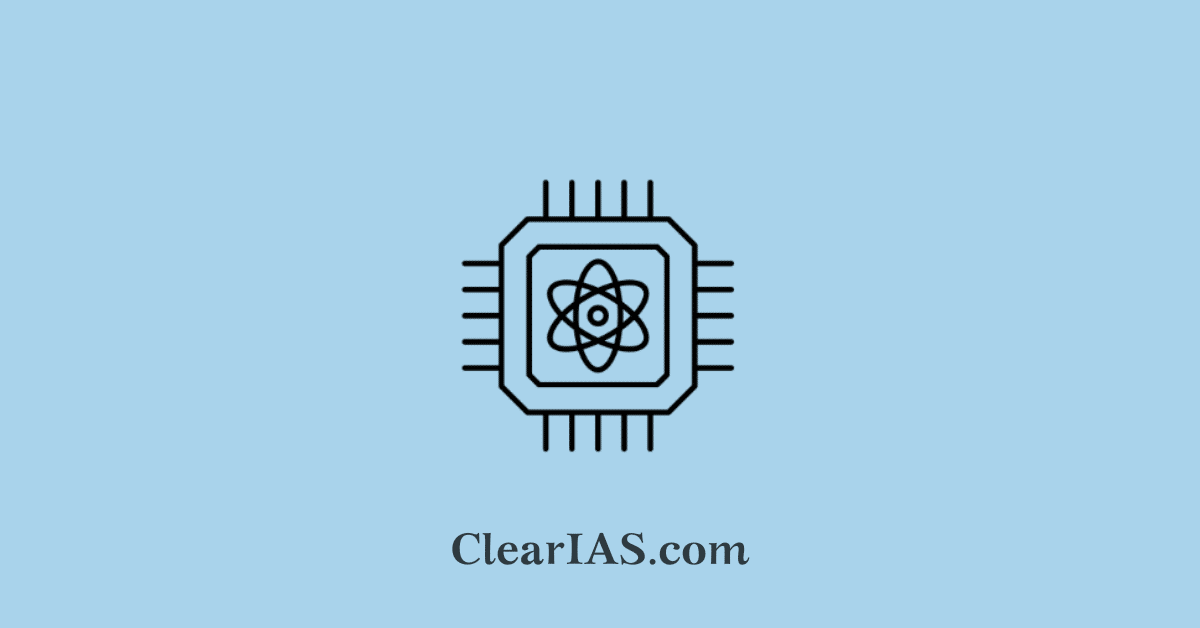
The United Nations proclaimed 2025 the International Year of Quantum Science and Technology (IYQ). According to the proclamation, this year-long, worldwide initiative will be observed through activities at all levels aimed at increasing public awareness of the importance of quantum science and applications. Read further to learn more about quantum science.
The year 2025 was chosen for this International Year as it recognizes 100 years since the initial development of quantum mechanics.
The United Nations has said 2025 will be designated the ‘International Year of Quantum Science and Technology’.
The proclamation resulted from a resolution led by Mexico in May 2023 and was soon joined by other countries.
International Year of Quantum Science and Technology
Recognizing the importance of quantum science and the need for wider awareness of its past and future impact, dozens of national scientific societies gathered to support marking 100 years of quantum mechanics with a U.N.-declared international year.
- The U.N. declaration is a signal for any individual, group, school, institution, or government to use 2025 as an opportunity to increase awareness about quantum science and technology.
- Quantum science and technology will be a key cross-cutting scientific field of the 21st century, having a tremendous impact on critical societal challenges highlighted by the U.N.’s 2030 Sustainable Development Goals, including climate, energy, food safety and security, and clean water.
History of Quantum Science and Technology
Early 20th Century – Birth of Quantum Mechanics:
- Max Planck (1900): Introduced the concept of quantization of energy, suggesting that energy is emitted in discrete units or “quanta.”
- Albert Einstein (1905): Explained the photoelectric effect using the idea of quantized light particles (photons), earning the 1921 Nobel Prize in Physics.
- Niels Bohr (1913): Developed the Bohr model of the atom, incorporating quantized electron orbits.
- Werner Heisenberg (1925): Formulated matrix mechanics, a foundational aspect of quantum mechanics.
- Erwin Schrödinger (1926): Developed wave mechanics and the Schrödinger equation, providing a wave-based description of quantum systems.
- Paul Dirac (1928): Combined quantum mechanics and special relativity, predicting the existence of antimatter.
Mid-20th Century – Development and Expansion:
- Quantum Electrodynamics (QED): Developed by Richard Feynman, Julian Schwinger, and Sin-Itiro Tomonaga, provides a comprehensive quantum theory of electromagnetism.
- Bell’s Theorem (1964): John Bell’s work demonstrated that quantum mechanics entails non-locality, challenging classical intuitions about separability and causality.
Late 20th Century – Quantum Information Science:
- Quantum Computation (1980s-1990s): Richard Feynman and David Deutsch proposed the concept of quantum computers. Peter Shor (1994) developed Shor’s algorithm, showing that quantum computers could efficiently factor large numbers.
- Quantum Cryptography: Charles Bennett and Gilles Brassard (1984) introduced BB84, the first quantum key distribution protocol, demonstrating the potential for unbreakable encryption.
Present State of Quantum Science and Technology
Quantum Computing:
- Hardware Developments: Significant progress in building quantum computers using various technologies like superconducting qubits, trapped ions, and topological qubits. Companies like IBM, Google, and startups like Rigetti Computing are leading the way.
- Quantum Algorithms: Development of algorithms beyond Shor’s and Grover’s, exploring applications in chemistry, materials science, and optimization problems.
Quantum Communication:
- Quantum Key Distribution (QKD): Implementation of secure communication channels using QKD, with commercial systems now available.
- Quantum Networks: Research into creating quantum networks for secure communication, including quantum repeaters and entanglement distribution.
Quantum Sensing and Metrology:
- High-Precision Measurements: Quantum sensors for highly sensitive measurements in areas like gravimetry, magnetometry, and timekeeping (atomic clocks).
Quantum Simulation:
- Simulating Quantum Systems: Using quantum computers to simulate complex quantum systems, potentially leading to breakthroughs in understanding high-temperature superconductors and new materials.
Future Prospects of Quantum Science and Technology
Quantum Supremacy and Beyond:
- Achieving Quantum Supremacy: Demonstrating computational tasks that classical computers cannot perform in any feasible timeframe, as claimed by Google in 2019.
- Fault-Tolerant Quantum Computing: Development of error-correcting codes and scalable architectures to achieve fault-tolerant quantum computers capable of solving practical problems.
Quantum Internet:
- Global Quantum Network: Building a global network for quantum communication, potentially revolutionizing data security and leading to new communication paradigms.
Advanced Quantum Materials:
- Discovery of New Phases of Matter: Using quantum simulators to discover and explore new phases of matter and exotic states like topological insulators and quantum spin liquids.
Quantum Artificial Intelligence:
- Enhancing AI: Leveraging quantum computing to accelerate machine learning algorithms and solving optimization problems faster, thus boosting AI capabilities.
Quantum Healthcare:
- Medical Applications: Quantum sensors for early detection of diseases, quantum imaging techniques for better diagnostics, and quantum computers for drug discovery and personalized medicine.
Interdisciplinary applications:
- Finance: Quantum algorithms can optimize trading strategies, risk assessment, and portfolio management, providing a significant advantage in financial markets.
- Climate Science: Quantum simulations can improve climate models and enhance our understanding of climate change, aiding in the development of better mitigation and adaptation strategies.
Conclusion
Quantum science and technology have evolved from theoretical foundations in the early 20th century to practical and commercial applications in the 21st century.
The future promises even greater advancements, potentially revolutionizing computation, communication, sensing, and various other fields.
The transition from classical to quantum technologies marks a profound shift, akin to the advent of digital computing, with far-reaching implications for science, industry, and society.
Related articles:
- National Quantum Mission
- Standard particle model of quantum mechanics
- Quantum computing
- Quantum dots
- Quantum Economy: Economic Impact of Quantum Technologies
-Article by Swathi Satish






Leave a Reply